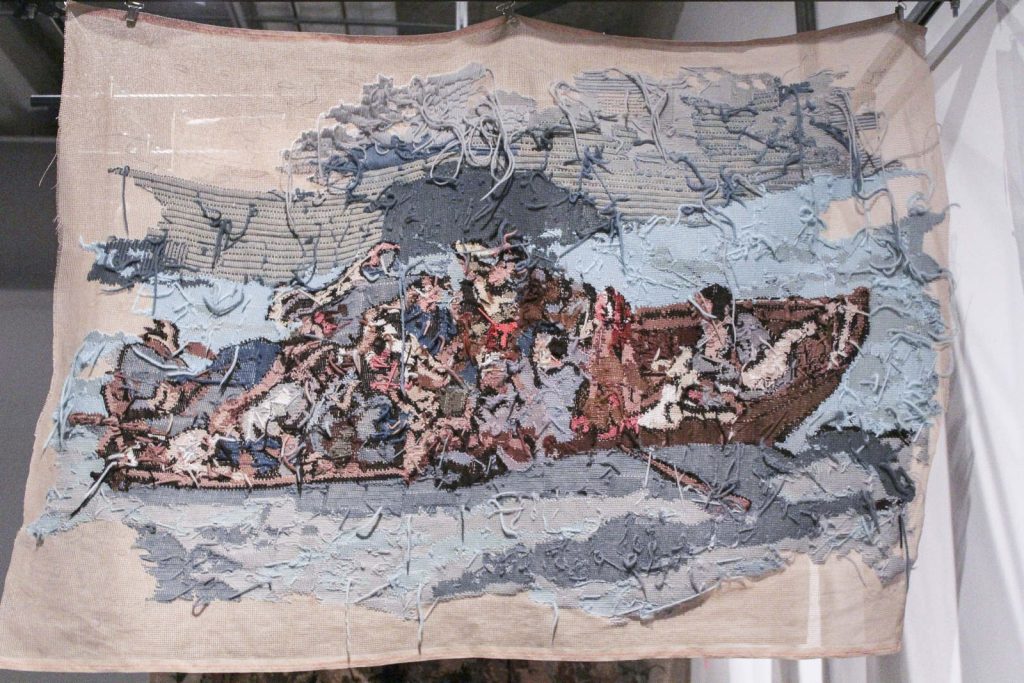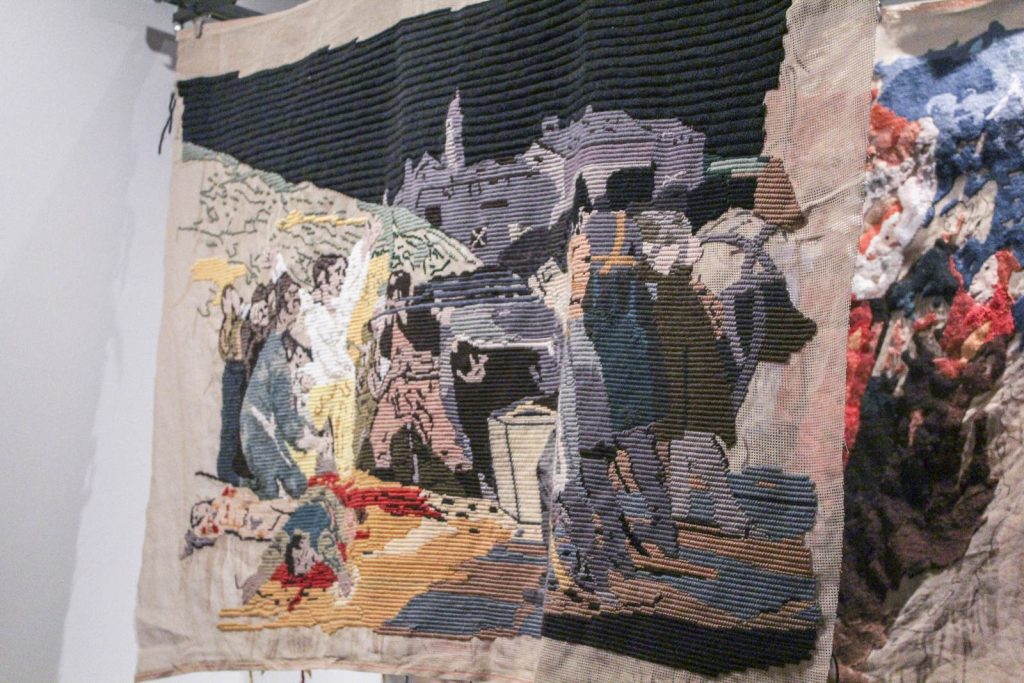

Stills from Faire le mur, 2009
To the Wall!
An Exercise in Revolution
with Bertille Bak
Amanda Walters
Bertille Bak is an artist and film maker living and working in Paris. Her practice involves immersing herself in communities and enlisting the community for collaboration and participation. For her 2008 film Faire le mur (Make the Wall) and accompanying tapestry work, Rayonnage (Shelving), Bak revisited a small mining town in the region of her familial home in northern France, Barlin. Prior to the film and tapestries, the area was zoned for redevelopment, forcing out its residents and promising them increased rents upon their return. For the film, the citizens of Barlin perform the role of the citizens of Barlin in a fantasy that depicts their reality, creating a parafictional narrative. The community revolts against the developers with humorous inventions and rituals, like a singular brick catapult, propelled by the weight of a child, aimed at the demolish machinery.


Bertille Bak. Rayonnage, 2009, Six banners, wool on canvas
The film is accompanied by an installation work, Rayonnage, comprised of 6 tapestries hung perpendicular to the wall. Each tapestry is a recreation of an iconic work depicting scenes of persecution or the acceptance of a doomed fate, as in Goya’s the Third of May 1808 and Gericault’s Raft of Medusa. Traditionally hung as wall coverings, tapestries are conventionally inert objects for observation. Hung perpendicular to the wall, these tapestries become objects of action, flags of protest mining the depths of art history as their language. The first three tapestries in the series were made collectively by members of the community, passed house to house in turns. After the initial works were made, and the citizens of Barlin relocated all over the country, three more tapestries were commissioned. The tapestries moved throughout the country as the former Barlin community traded turns for their stitches.

Rayonnage, 2009
The forms of these inventions suggest a mix of intentions: catharsis, humor, and action. The two entwined projects contain their own set of strategies. While the film’s acts of the revolt will not save the community from its reality, it does offer the exercise of action. The revolt themed activities put to use the anxiety of repressed momentum contained by an inert position that might be induced by the lack of power and control over the fate of the town and its citizens. The tapestries take a different and doomier direction. The project allows the makers to communicate their experience through epic tragedies. Where the telling of a town closure and rezoning on the bottom clicker of the news invites a moment of sympathy from the few who notice, the same story told through Goya encourages embodied empathy and the consideration of the full weight of the situation. Outside of the offer of visibility and the memorialization of their erasure, both projects m emorialize the citizens as authors of their fantastical revolt, giving them power and agency during the towns demise.
BERTILLE BAK Faire le mur, 2009, clip